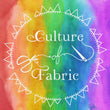National Quilting Day March 20, 2021
National Quilting Month started with a day in 1991. Each year on the third Saturday of March millions of people celebrate the long-lasting tradition of quilting. Over the years it has expanded to an entire month. There are so many quilts and patterns in the United States and around the world. I would like to share a few countries that inspired the rest of the world to make quilts.

Many articles talk about the oldest quilts coming from Europe; however, this is not the entire truth. The oldest surviving quilt known is the Sicilian Tristan and Isolde Quilts displayed at the Victoria and Albert Museum in London, England and the Bargello in Florence, Italy. This quilt, two pieces, is believed to have been created in the late 14th century. It is all white and shows a story of a romance and tragedy. The white linen fabric is detailed by white and brown thread and is approximately 10 feet by 9 feet. This quilt was clearly made to be admired and is a work of art.
Many quilts had humble beginnings as they were a necessity not an art piece. This did not stop the artists from making them beautiful, but they had a more functional use than some of todays quilts. The oldest depiction of a quilted garment is seen on the carving of a Pharaoh dating from 3400 BCE. Archaeologists also discovered a quilted floor covering in Mongolia from around 100 BCE to 200 CE.
Egypt has a unique form of applique quilting, Khayamiya, originally used in the making of nomadic tents. These artists are exclusively men and are known as Tentmakers. Originally made of hide these exquisite quilts are now made with quality Egyptian cotton of vibrant solid colors in geometric or floral designs. As the tradition stems from the region of Islam there are never human forms included in these works of art.

Chinese patchwork quilts and clothing have a been a tradition for millennia. One you may recognize is the newly transformed Baijia Pao or Hundred-Families Robe into the One Hundred Good Wishes Quilt. Today A One Hundred Good Wishes Quilt is made to celebrate the adoption of a child from China. The original tradition of giving a baby a quilted robe was for good luck and long life. Each family of the community would contribute fabric to the mother to make the robe. Many East Asian countries celebrate the 100th day of a child being born because until recently many of these children did not make it out of infancy. The patterns were often hexagons stitched in the same way as English Paper Piecing. You cut the fabric into hexagons of the same size leaving a ½” seam allowance and stitch the pieces facing one another on each side.

Japan has a much-recognized bedding called Futon. Well, the bed is a Futon, but the quilt is a Kakebuton. This is like the western duvets. Kakebuton is traditionally filled with silk rather than down feathers or cotton. This helps to maintain the body temperature and keep you warm. Silk also has the added features of being hypoallergenic because it is resistant to dust mites and mildew. These quilts are considered over-stuffed compared to other ancient quilts.
In Pakistan, India, and other Southeast Asian countries the Kantha and Kawandi or Siddi quilts were developed as soft lightweight blankets better suited for the tropical conditions. Kantha cloth or quilts are made from recycled or used Saree (Sari) and a layer of batting that is very lightweight. The Saree is folded in half to sandwich the batting between the two sides and then large stitches are used to quilt all three layers. Some are very plain while others have decorative designs. As the quilts wear down the women would patch them adding small pieces from other scraps of fabric.

Siddi and Kawandi are quilt making by applique. One starts with a large piece of fabric for the back, most likely a Saree, and a layer of batting. Then small square, rectangle and sometimes triangles are sewn as applique with large stitches. The purpose of the quilt was not to be perfect but to be a simple of the creator’s personality.
So, all these techniques inspired the European quilts. It is said that the Crusaders were the first to use quilted jackets under their armor in the 12th century. Decorative quilting began around the 14th and 16th centuries in the form of petticoats, bodices and bed covers. As the world became smaller more missionaries spread the work of quilting to almost every nation around the world thus giving us the enormous variety of colors and designs we see today.
Bibliography
https://nationaldaycalendar.com/national-quilting-day-third-saturday-in-march/
https://digitalcommons.unl.edu/cgi/viewcontent.cgi?article=1691&context=tsaconf
https://www.quiltofbelonging.ca/blocks/egypt/
http://www.tentmakersofcairo.com/the-history
Photo by Eric Prouzet on Unsplash
Photo by Nathan Bang on Unsplash
Photo by Sophia Kunkel on Unsplash






on the sashiko yardage.. If I wanted to make a jacket out of the yardage, do you cut the pattern pieces before the stitching is done? Thank you for a reply..
Leave a comment